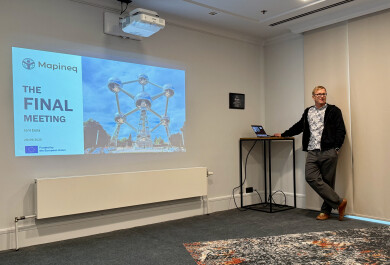According to mothers’ experiences, the daily life during the coronavirus pandemic and lockdown in the spring of 2020 blurred the boundaries between work and family responsibilities and roles. Especially in families where the division of childcare responsibilities had been unequal already before the pandemic and where only the mother switched to working from home, the mothers felt that they shouldered the main responsibility for the increased childcare duties.
In spring 2020, the outbreak of COVID-19 forced many people to work remotely from home. At the same time, school and daycare closures increased the amount of care work for parents. Consequently, work–family boundaries blurred as parents' ability to control where and when they needed to fulfil their work and childcare responsibilities was constrained significantly.
A research project led by the University of Turku in Finland set out to study family life during the COVID-19 pandemic and how Finnish parents reconciled work and family practices during the lockdown in spring 2020.
According to the study, mothers’ opportunities to draw boundaries between work and family life were particularly limited if only the mother was working from home and the parents did not negotiate how work and childcare responsibilities are shared. In these families, the mothers shouldered the increased burden caused by the extraordinary circumstances by trying to manage work, childcare and housekeeping chores.
– Home was changed into a multi-function space, meaning that it was a workplace, daycare and school at the same time. In addition, the mothers were struggling with several simultaneous roles: they had to juggle work, childcare, home school, cooking, laundry, and cleaning the house. In some families, mothers also undertook the so-called metawork, meaning the responsibility for planning the family’s everyday activities and seeing them through, describes the researcher project’s PI, University Lecturer Milla Salin from the Department of Social Research at the University of Turku, Finland.
In families where both parents shifted to remote work, there was also a struggle to negotiate the spatial boundaries so that the spaces at home were sufficient both for parents’ remote work and children’s home school. According to the first author, Lecturer Katri Otonkorpi-Lehtoranta from the Humak University of Applied Sciences in Finland, families set up separate, quiet workspaces in the garage or sauna whenever possible. If it was not possible to dedicate a workspace for both parents simultaneously, mothers’ flexibility on their workstations was highlighted in the responses. Typically, the mother’s workstation was situated in the kitchen or in other common spaces shared by the family. In these spaces, the children easily assumed that the mother was at their service even if she was trying to work.
However, in some families, the increased childcare responsibility was more evenly divided between the parents and an equal opportunity to work in the changed circumstances was ensured for each parent.
– In order to agree upon the daily and weekly “work shifts” between the spouses, some parents made “family timetables” which included the work and school assignments of both parents and children. The negotiations between parents on who is responsible for childcare and home schooling were based on the timetable. If both parents were working from home, the daily “work and childcare shifts” were divided, for example, according to the parents’ mandatory work tasks, such as meetings, or so that in the mornings the other parent was working and the other taking care of the children and vice versa in the afternoon, says Salin.
Pandemic Made Gendered Practices Apparent and Highlighted the Importance of Support from the Welfare State
According to Otonkorpi-Lehtoranta and Salin, the COVID-19 pandemic highlighted the gendered practices and the significance of the welfare state in the everyday lives of families with children.
– Some of the mothers said that the childcare responsibilities had been unequal already before the pandemic, but they had not experienced it as a great issue. It could be that, in normal circumstances, the mother’s greater responsibility in childcare is less visible and does not challenge the negotiation of the boundaries between work and family in the same way as these responsibilities are shared with the support services and institutions provided by the welfare state, particularly with the school and daycare system. During the coronavirus lockdown, most families lost this support and the increased care and other tasks were shouldered by the mothers.
The research data was gathered in the spring 2020 with an online survey mapping the experiences and challenges of Finnish families during the coronavirus pandemic. It should be noted that the data does not give a comprehensive representation of Finnish parents: most of the respondents were women and had a relatively high level of education.
> Otonkorpi-Lehtoranta, Katri; Salin, Milla; Hakovirta, Mia & Kaittila, Anniina (2021) Gendering boundary work: Experiences of work-family practices among Finnish working parents during COVID-19 lockdown. Gender, Work & Organization, early view edition. Link to the publication: https://doi.org/10.1111/gwao.12773





